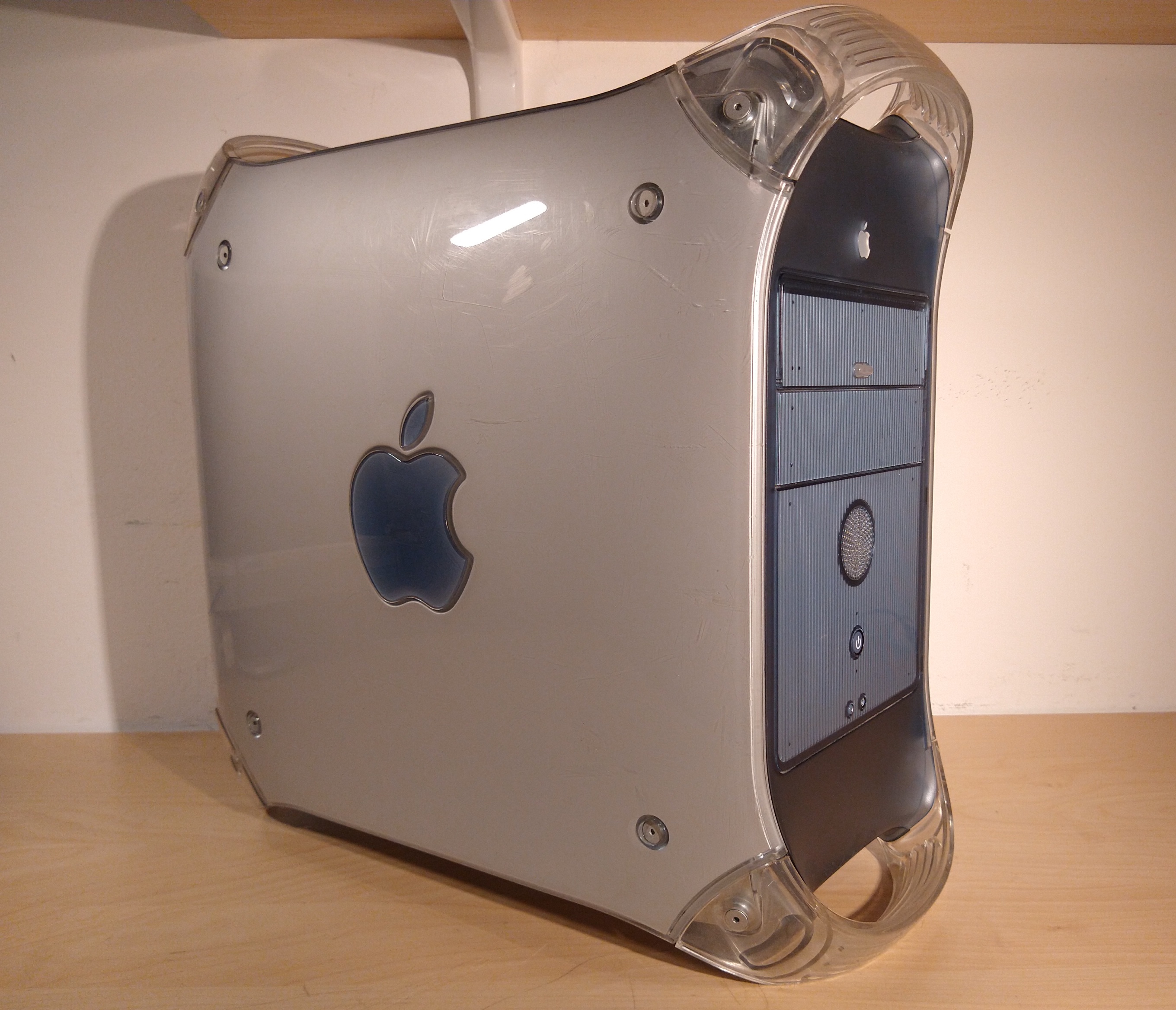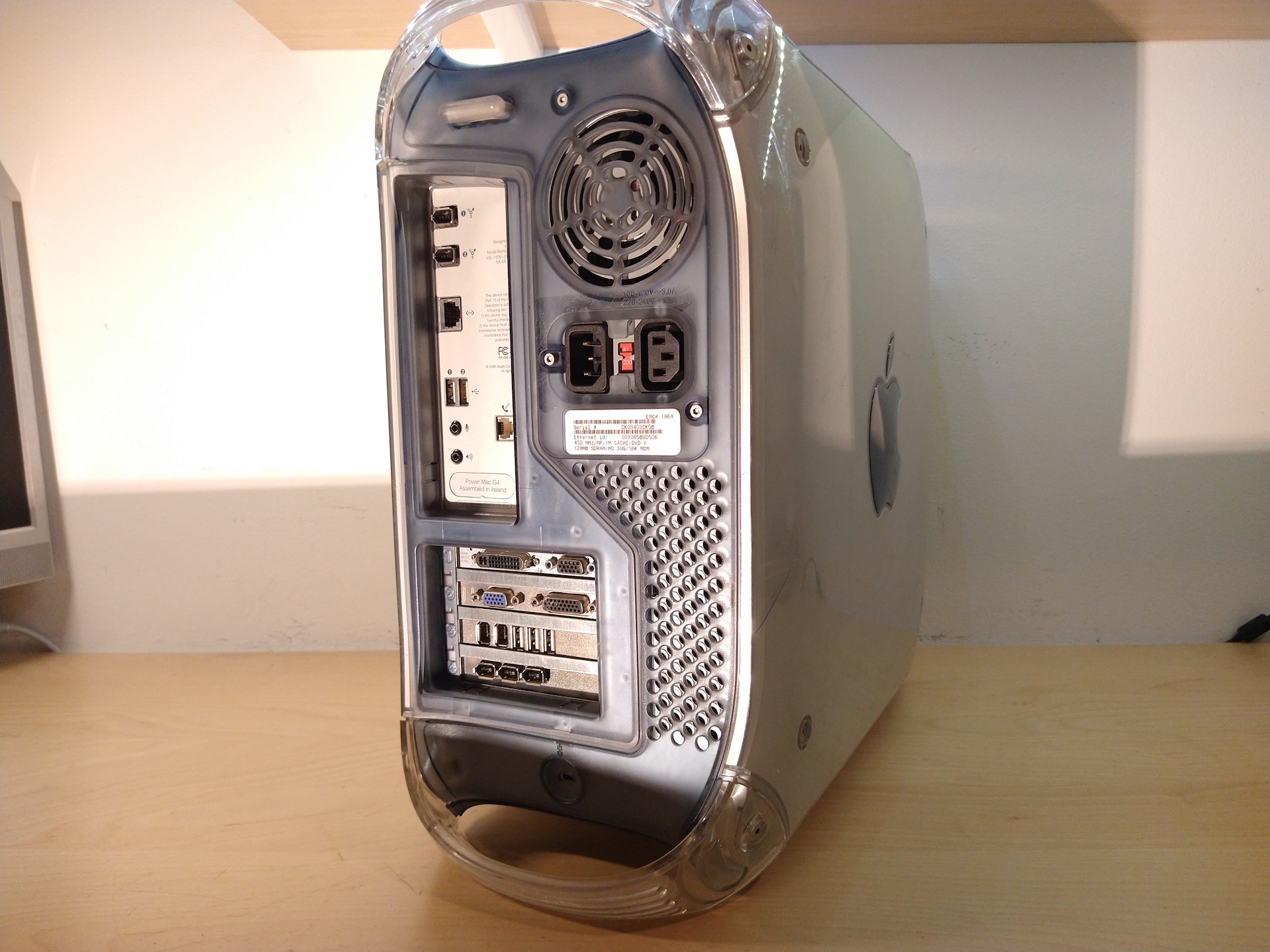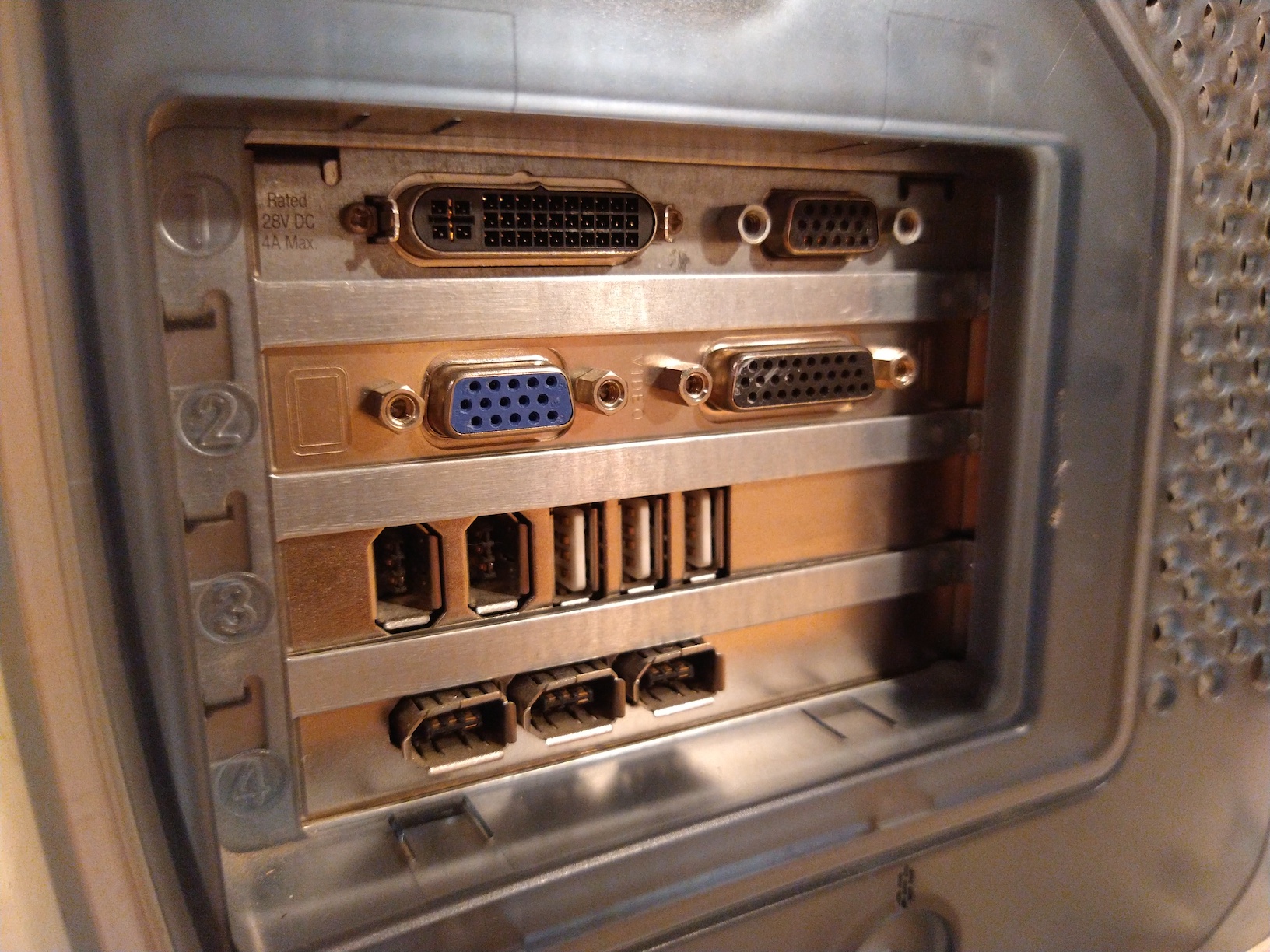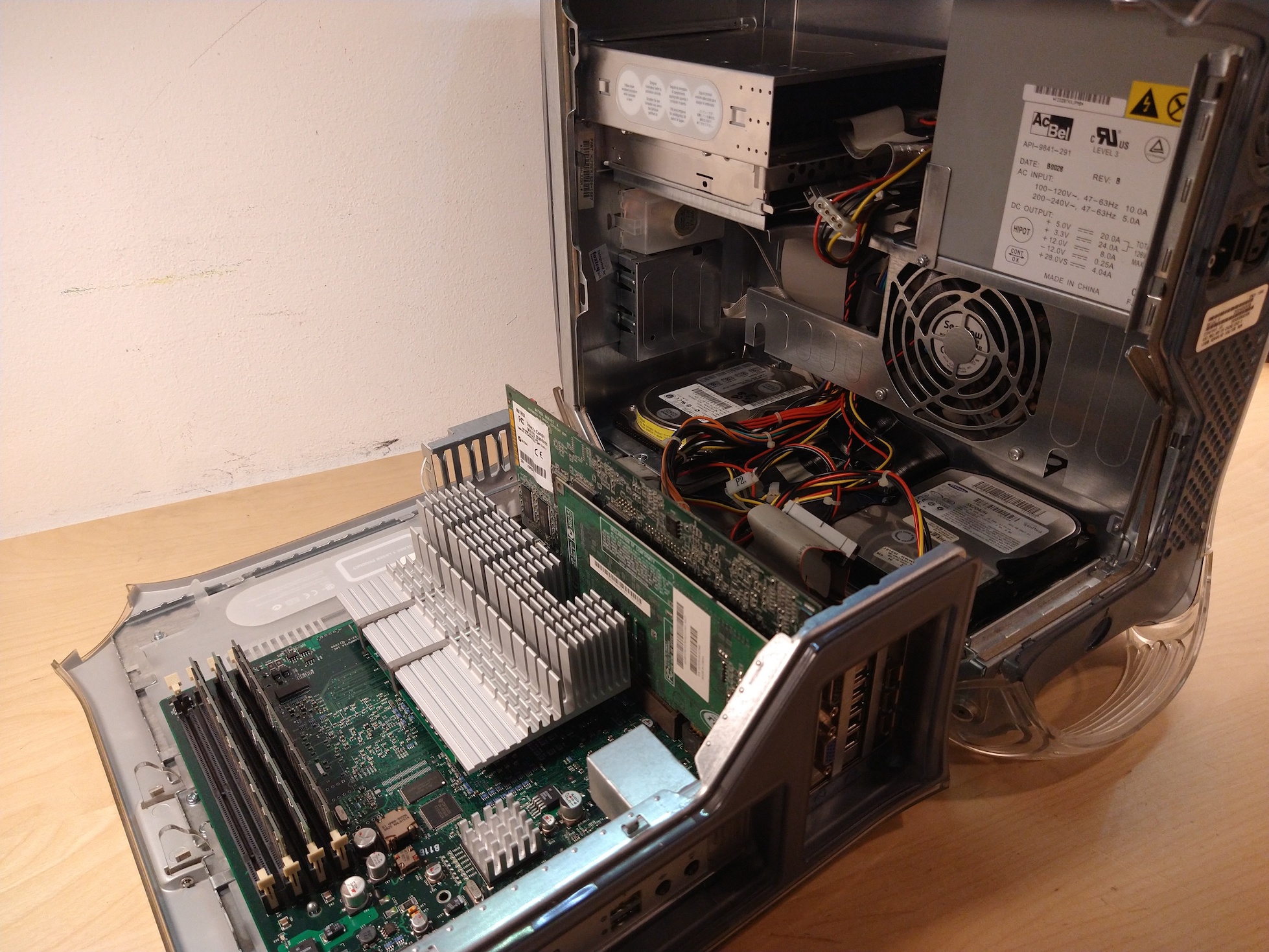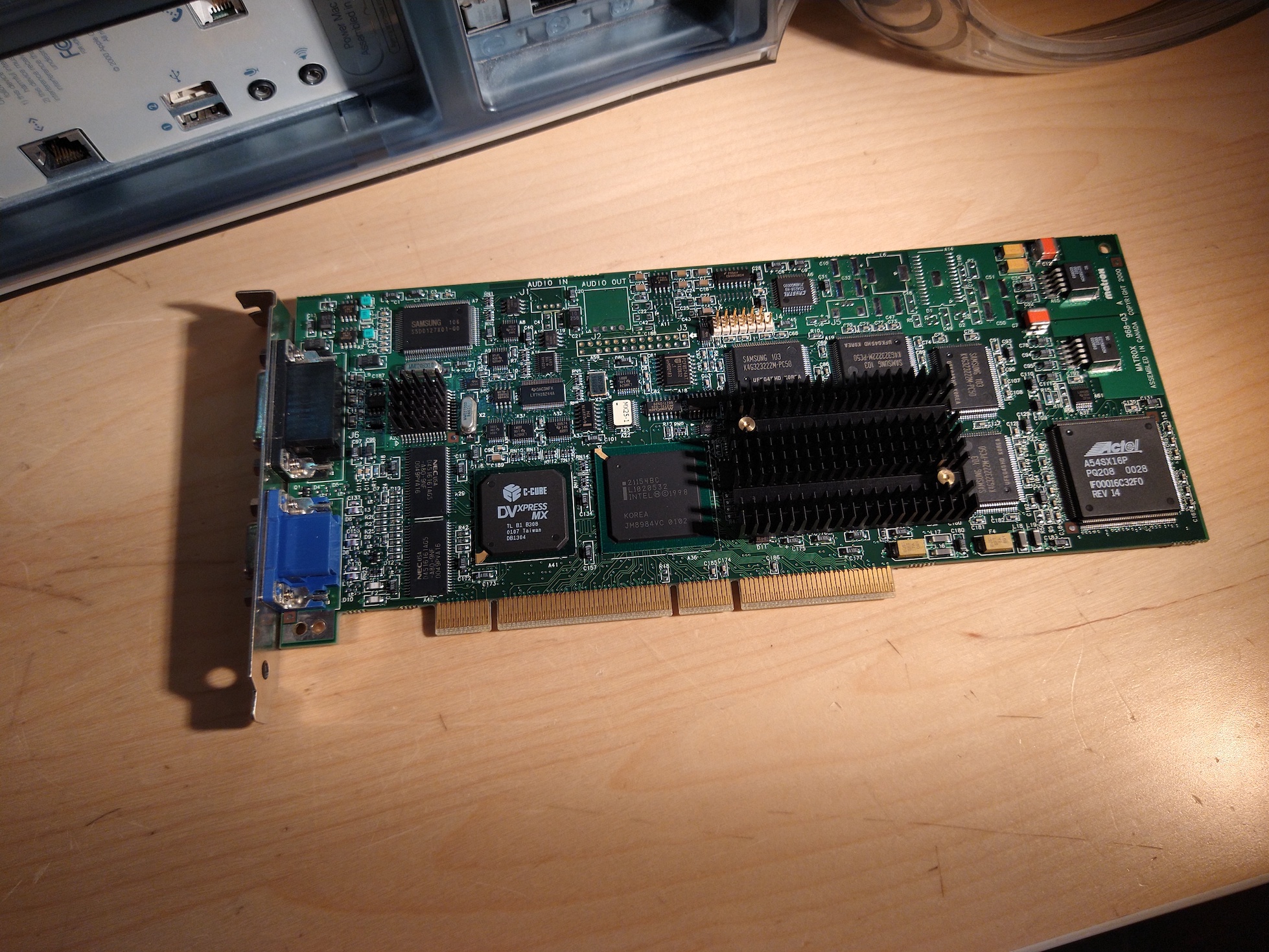Power Macintosh G4 (Gigabit Ethernet)
I made a Twitter thread about this computer too! Feel free to check it out, there are some things there that I haven't covered in this page.
Specifications
- Processor: 2x PowerPC G4 @ 450 MHz
- RAM: 512MB PC100 (expandable up to a maximum of 2GB, or 1.5GB if using Mac OS 9)
- Video card: ATI Rage 128 Pro AGP
- Operating system: Mac OS 9.2.1 + Mac OS X 10.3
- Other expansions: Matrox RTMac, PCI FireWire card, PCI USB 2.0 + FireWire Card, AirPort card
About this computer
Compared to the previous models in the product line the PowerMac G4 Gigabit Ethernet added, as the name implies, Gigabit Ethernet networking capabilities, however that model also added other features like the ability to order the system in a dual-processor variant (like in my computer) and it introduced the ADC port, which carried power, video signals and USB to your monitor all on one cable (though it was a massive failure and was dropped from later Macs).
This model used the same “Graphite” case as the earlier G4s, which itself was just a redesign of the Power Mac G3 Blue and White case. This revision was widely seen as a stopgap release, because higher clocked G4s weren’t available yet: the dual CPUs were probably a way to squeeze a bit more performance out of that design of G4s.
Working on the machine
The case of the PowerMac opens very easily, just by pulling on a latch on the side, and it reveals the internals, with 4 RAM slots, an AGP slot and 3 PCI-X slots, and 3 hard drive caddies (though in my computer one of them has been pulled out, probably by someone looking to retrieve the hard disk).
All the expansions slots in my computer are filled: the AGP slot, of course, is used by the graphics card, which in this case is just the base model, the ATI Rage 128 Pro with 16MB of SDRAM, though it is possible to install other cards if you desire to; the other expasion cards consist in the Matrox RTMac, a card that would have been very useful to people editing videos on their PowerMac G4s, a simple PCI FireWire card (which would have been used, for example, to connect to external hard disks and DV camcorders) and the card I added: a PCI USB 2.0 and FireWire card, which is definitely useful to have to transfer files over USB drives faster than with the built-in USB 1.1 ports.
The speed provided by the dual processors would have accelerated programs that supported them a lot, and thus it’s no wonder that, given the expansions inside of it, this computer was very likely used in a video production environment.
The Matrox RTMac
The Matrox RTMac was a card created specifically for the AGP PowerMac G4s that was designed for people looking to edit video on their Macs; the card is as long as the G4's motherboard and it connected to the computer with a PCI-X slot. It combined three main functions onto one card (something very handy to have on the PowerMac G4, since it doesn't have a lot of expansion slots):
- The ability to connect a second monitor to your computer (though this seems to have some limitations and it caused all of my games, both in Mac OS X and Mac OS 9 to stop working)
- It could digitise analog audio and video via the use of an external breakout box which had composite video, S-video and audio inputs and outputs (the outputs could be used to connect to a preview monitor or TV). Unfortunately I don’t have the the breakout box so I can’t test out that feature
- Additionally, the card could also accelerate certain video effects (like titles, fades and slides) on Final Cut Pro and Adobe Premiere, though with certain limitations (see the MacWorld article linked below for more information on this).
The card has drivers for both Mac OS 9 and Mac OS X, and it can work with video editing programs on both OSs, though, given that its drivers have caused all of my games to stop working, I'd reccommend keeping separate partitions or hard disks, one with an OS with the drivers installed and one without them, if you want to keep using this card in your PowerMac.
Pictures
